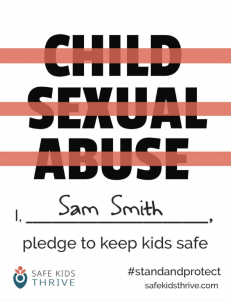Read the Report
Home / Read the Report
Community Partnerships
Collaboration is “a mutually beneficial and well-defined relationship entered into by two or more organizations to achieve results they are more likely to achieve together than alone.” 1
Collaborative efforts between individual YSOs and local service providers in the community can be an effective means of preventing child maltreatment. Community partnerships for the welfare of children, and child protection coordinating committees or task forces, provide an organizational structure that allows community organizations like YSOs to work together with other local resources involved in meeting the needs of maltreated children and their families. A community-based effort can define roles and responsibilities, increase communication, provide guidance, identify gaps in services, and avoid duplication of effort, which enhances the efficient use of existing services and resources.
YSO efforts to create child abuse prevention programs can be strengthened by including an emphasis on building collaborative relationships with education and training, social service delivery, investigative/law enforcement, and child/youth advocacy expertise in the community. Some of these activities and agencies may include:
- Cooperative training and staff development programs for those who work with children and youth. These programs stress identifying, reporting, and preventing child/youth maltreatment; furnish information on professional roles and responsibilities; and offer opportunities for discussion of mutual interests and problems among professionals in various disciplines. YSOs that are building or strengthening their child abuse prevention frameworks can look to these community organizations to advise them on the training programs that will best meet their needs. In many cases, they can provide (or conduct) online and/or on-site staff and volunteer training, and are usually aware of existing programs in the local community where the YSO may be able to send its employees and volunteers to participate.
- Public schools also participate in various public awareness programs through parent-teacher groups and other school-community organizations. By increasing public sensitivity to child maltreatment, schools help to develop a cadre of concerned citizens who advocate for resources and programs for child abuse and neglect prevention. School personnel are among the many groups normally called upon to work together along with multiple agencies and professional disciplines to maximize the services available to the community. YSOs can contact their local school district, become familiar with these collaborations, increase their knowledge of local services, and participate in the efforts in the local community to protect children.
- Community partnerships are essential for building relationships, sharing expertise, accessing services, and building legitimacy and advocacy within the community. Some of the relevant Massachusetts organizations are the Department of Children and Families; regional Child Advocacy Centers; the District Attorneys Association; the Children’s Trust; the Department of Education; the Office of the Child Advocate; and local colleges, universities, community health centers and children’s hospitals.
Community partnerships also foster more effective communications. In terms of considering a communications strategy for incidents or allegations of child abuse and neglect, it is important to remember that when actual instances of child abuse are uncovered, particularly child sexual abuse, they are seldom isolated. Experience (and research) shows that individuals who victimize children do so consistently and over long periods of time. When discovered, and within the bounds of any legal investigation and the privacy and reputation of the individuals involved, communications should promote the development of cooperative and open relationships. To that end, YSOs should communicate appropriately with the communities they serve, the general public, and members of the media regarding complaints of child abuse. Effective, transparent communication serves not only to legitimize the commitment to building safe environments, but also may enable others who suffered (or are suffering) similar abuse to come forward and identify themselves.
YSOs working to build or strengthen their child protection programs do not need to “go it alone.” Because YSOs are part of the fabric of the communities in which they reside, community partnerships are one of the best ways to stay informed and to utilize the resources and expertise the partnerships represent – not only in terms of building safer environments in their own organizations, but also in partnering with the larger, societal efforts that address the issues of child abuse and neglect as a shared concern.
1 Winer, M., & Ray, K. (1994). Collaboration handbook: Creating, sustaining, and enjoying the journey (p. 24). Saint Paul, MN: Amherst H. Wilder Foundation.
- Acknowledgements
- Executive Summary
- Introduction
- How to Read This Report
- Mission & Purpose of Taskforce
- A Brief History of How the Taskforce Was Organized
- The Charge of the Legislative Language
- Key Sections
- Section 1: Developing Policies and Procedures for Child Protection
- Section 2: Screening and Background Checks for Selecting Employees and Volunteers
- Section 3: Code of Conduct and Monitoring
- Section 4: Ensuring Safe Physical Environments and Safe Technology
- Section 5: Recognizing, Responding to, and Reporting Allegations and Suspicions of Child Sexual Abuse
- Section 6: Training About Child Sexual Abuse Prevention
- Additional Considerations
- Applying the Framework: A Five-Year Plan
- Appendices
- Section-Specific Appendices
- Downloadable Resources

Take the Pledge to Keep Kids Safe
Join us and commit to learning how you can protect the children you serve.
Sign Up to Access Your Learning Center
Customized child sexual abuse prevention guidelines to meet the unique needs of any organization that serves children.
- Evidence-informed guidance
- Actionable prevention steps
- Keeps track of your progress
- Tailored learning tracks


